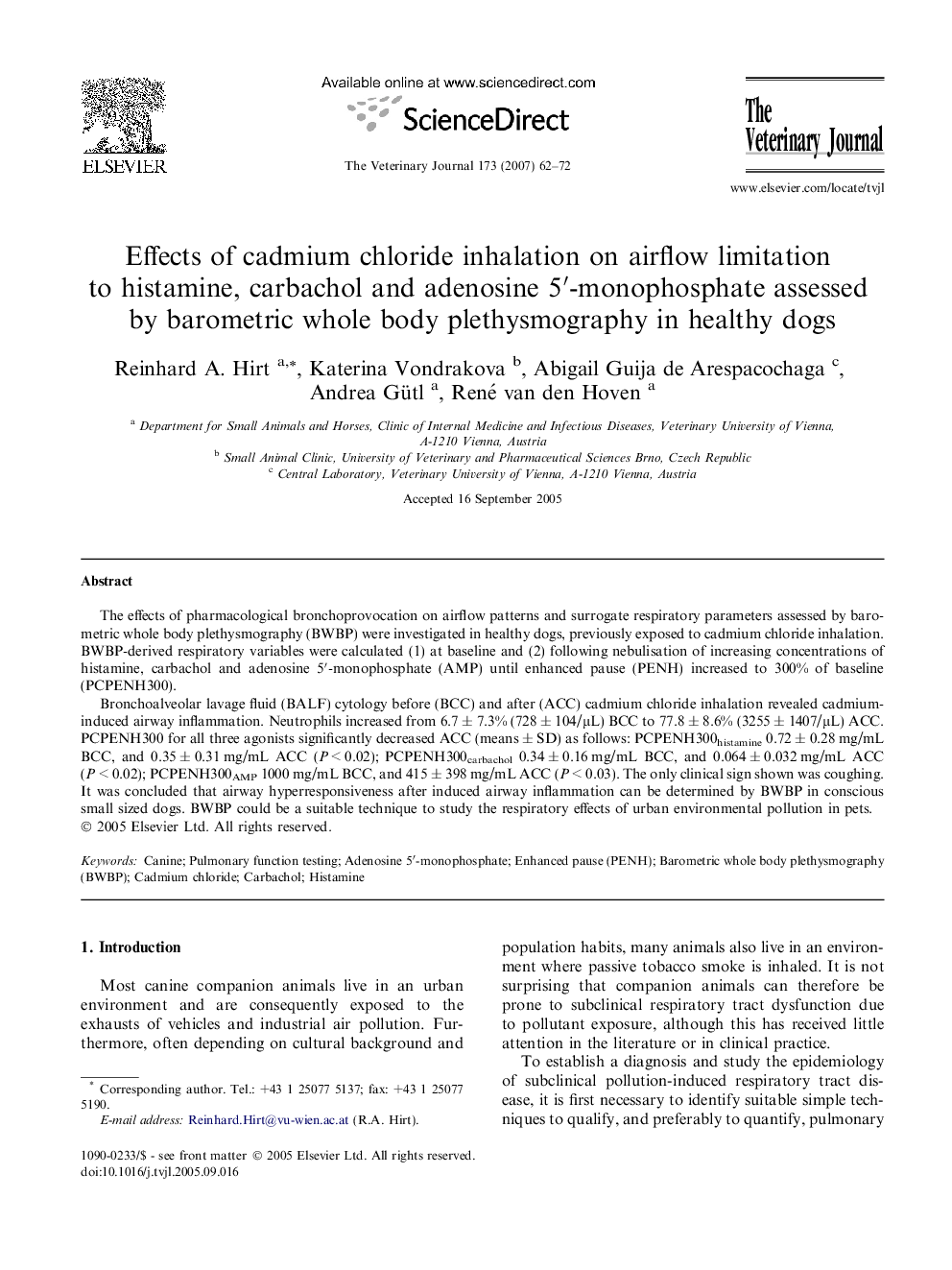| Article ID | Journal | Published Year | Pages | File Type |
|---|---|---|---|---|
| 2466178 | The Veterinary Journal | 2007 | 11 Pages |
The effects of pharmacological bronchoprovocation on airflow patterns and surrogate respiratory parameters assessed by barometric whole body plethysmography (BWBP) were investigated in healthy dogs, previously exposed to cadmium chloride inhalation. BWBP-derived respiratory variables were calculated (1) at baseline and (2) following nebulisation of increasing concentrations of histamine, carbachol and adenosine 5′-monophosphate (AMP) until enhanced pause (PENH) increased to 300% of baseline (PCPENH300).Bronchoalveolar lavage fluid (BALF) cytology before (BCC) and after (ACC) cadmium chloride inhalation revealed cadmium-induced airway inflammation. Neutrophils increased from 6.7 ± 7.3% (728 ± 104/μL) BCC to 77.8 ± 8.6% (3255 ± 1407/μL) ACC. PCPENH300 for all three agonists significantly decreased ACC (means ± SD) as follows: PCPENH300histamine 0.72 ± 0.28 mg/mL BCC, and 0.35 ± 0.31 mg/mL ACC (P < 0.02); PCPENH300carbachol 0.34 ± 0.16 mg/mL BCC, and 0.064 ± 0.032 mg/mL ACC (P < 0.02); PCPENH300AMP 1000 mg/mL BCC, and 415 ± 398 mg/mL ACC (P < 0.03). The only clinical sign shown was coughing. It was concluded that airway hyperresponsiveness after induced airway inflammation can be determined by BWBP in conscious small sized dogs. BWBP could be a suitable technique to study the respiratory effects of urban environmental pollution in pets.
